Wild mustard has been widely used as condiments. Did you know that it can be used for salad and traditional herbal? Keep on reading to figure out more facts about this plant and how to prepare it for your dish.
Wild Mustard: Overview
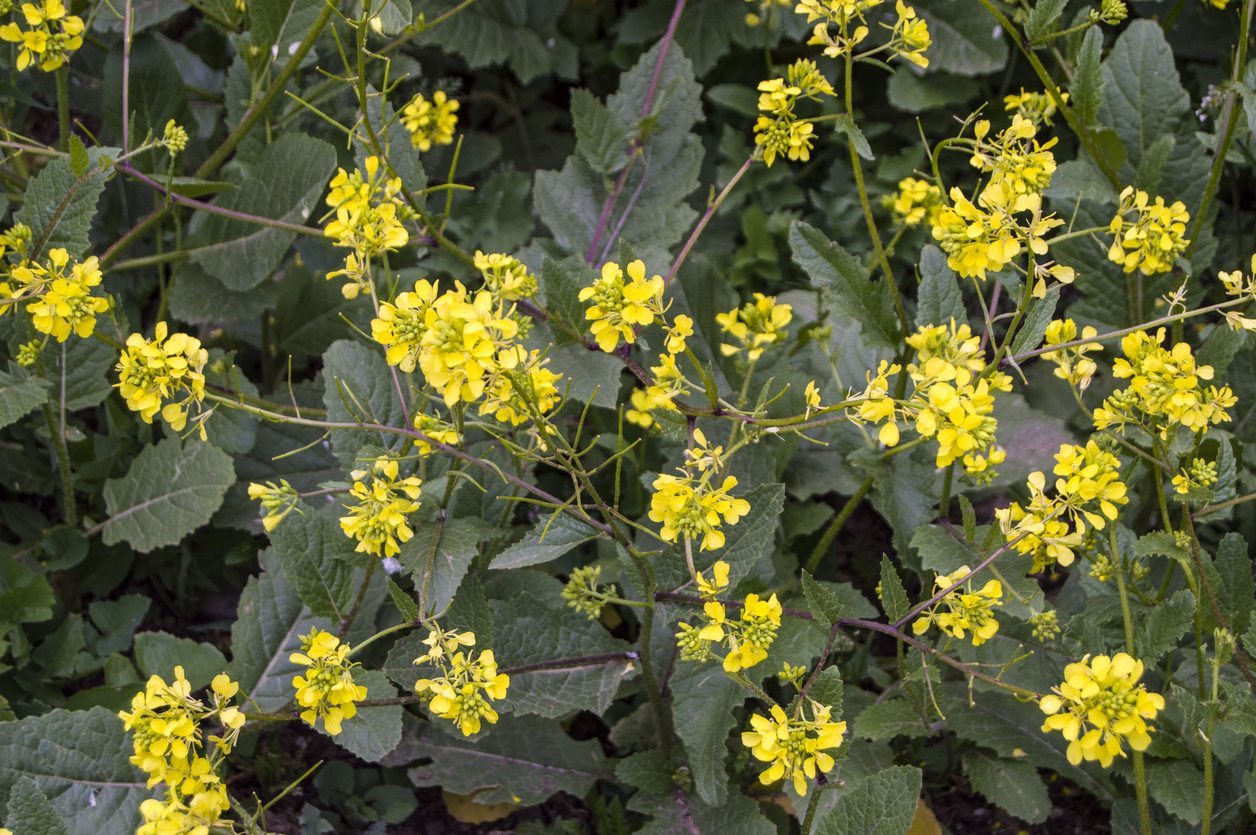
Wild mustard, Sinapsis arvensis, is an annual plant. It belongs to the family of Cruciferae, such as broccoli, kale, cauliflower, cabbage, and Brussels sprouts. it’s usually surrounded by oak trees.
This hardy plant used to grow in Eurasia. But now, it can grow everywhere on this earth, even in Greenland and the North Pole. Therefore, you do not have to cultivate it as you can find it easily.
Additionally, wild mustard – also known as field mustard, California-rape, Corn mustard, kedlock, kelk, kilk, and charlock – is frost and drought tolerant. Since it is not fussy and can put up with any type of soil, it grows rapidly in fields and along roads.
Just like their cousins, broccoli, kale, and cabbage, all wild mustards are edible. However, they do not share the same taste. Some might be more delectable than others.
Not only the leaves but also the flowers and seeds are edible. Even more, Canola oil is made from the wild mustard seeds.
However, cattle ranchers do not see field mustard as an edible herb. They consider it as a poisonous plant because cows usually get extremely sick after eating it.
Wild Mustard Plant Identification
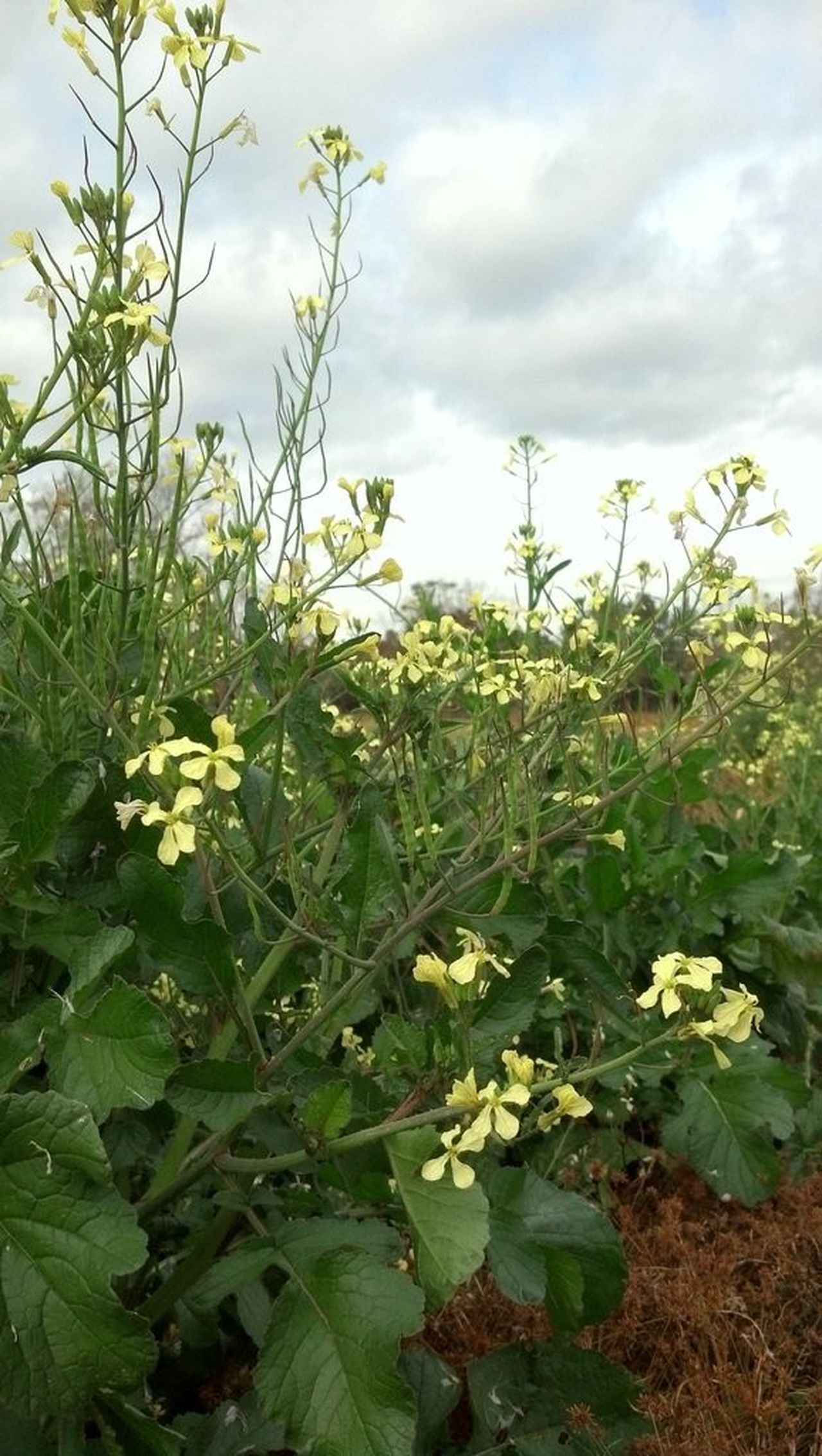
Since field mustard grows prolifically everywhere, people can mistake it for other similar plants.
Well, recognizing this herb is not that hard. Read on about how to identify wild mustard below.
Plant Description
Wild mustard is a winter annual plant that can grow up to 7.9 or 31.5 inches, or even more if it lives in an excellent condition like in nutrient-rich soil. It also can thrive in a lime-rich one, though.
You will be likely to find this plant in the plains and mountains, cultivated fields, roadsides, waste places, pastures, gardens, clearings, shores, riverbanks, railways, and orchards.
Wild Mustard Leaves
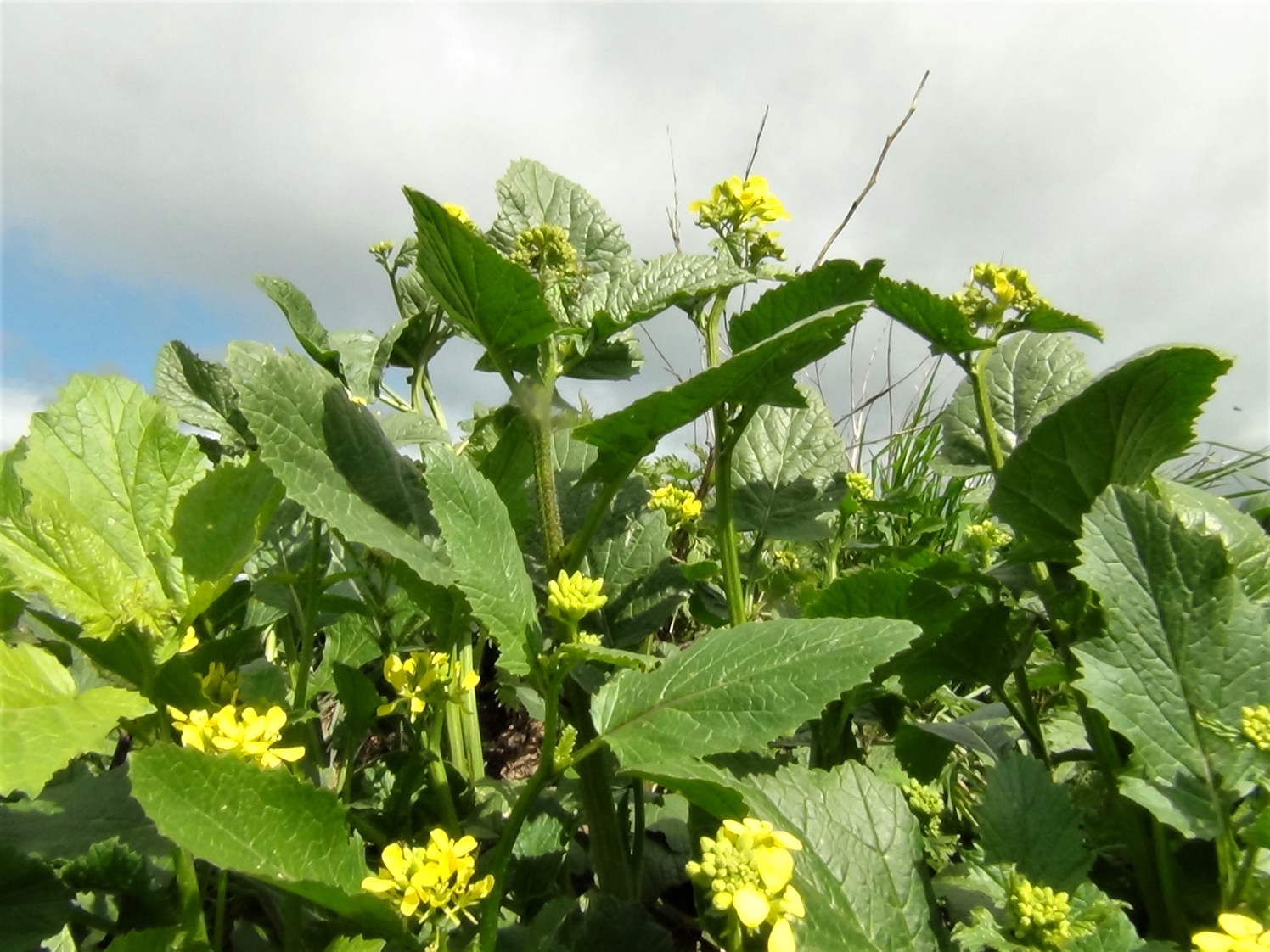
Let’s talk about the leaves first. They are usually 1½ to 7 inches long and ½ to 2 inches wide. They are broadly oval to egg-shaped with irregular toothed edges shape. The leaves are covered with slightly prickly fine hair.
The oval basal leaves are oblong. They can also be lanceolate, lyrate, pinnatifid to dentate that can grow up to 1.6–7.1 in long and 0.79–1.97 in wide.
The stems of wild mustard are either green or with reddish pigmentation that usually occurs near the leaf axils. They are also covered with prickly fine and coarse hairs.
Flower
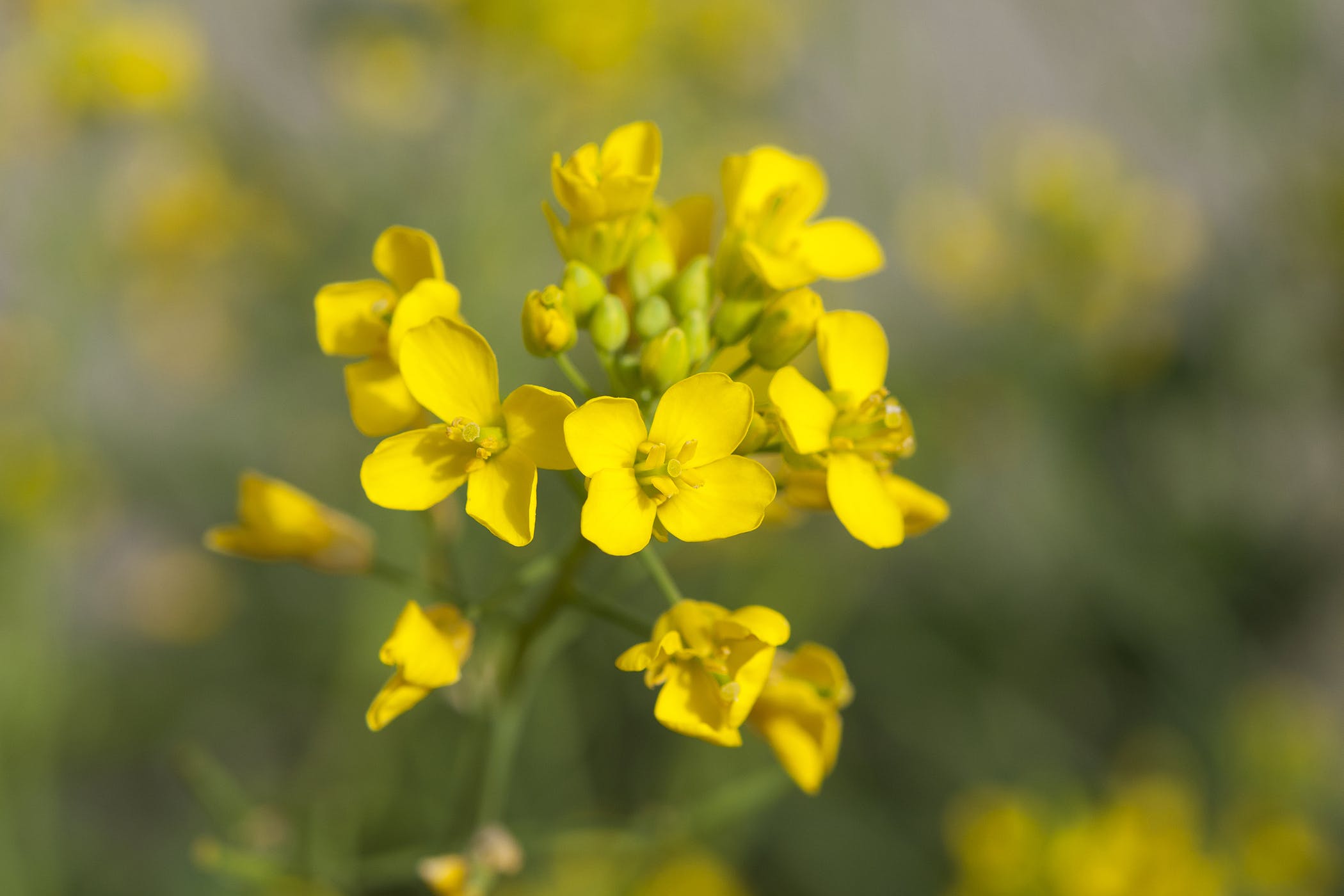
One of the most conspicuous things about wild mustard is its vivid yellow flowers that form in clusters attaching at the end of long flower stalks. They feature four narrow petals that are completely void of veins.
The sepals are narrowly oblong and spreading with rolled-in edges. Flower stalks are quite stout. They ascend and can grow up to 1/16 or 1/4 inch long.
Fruits
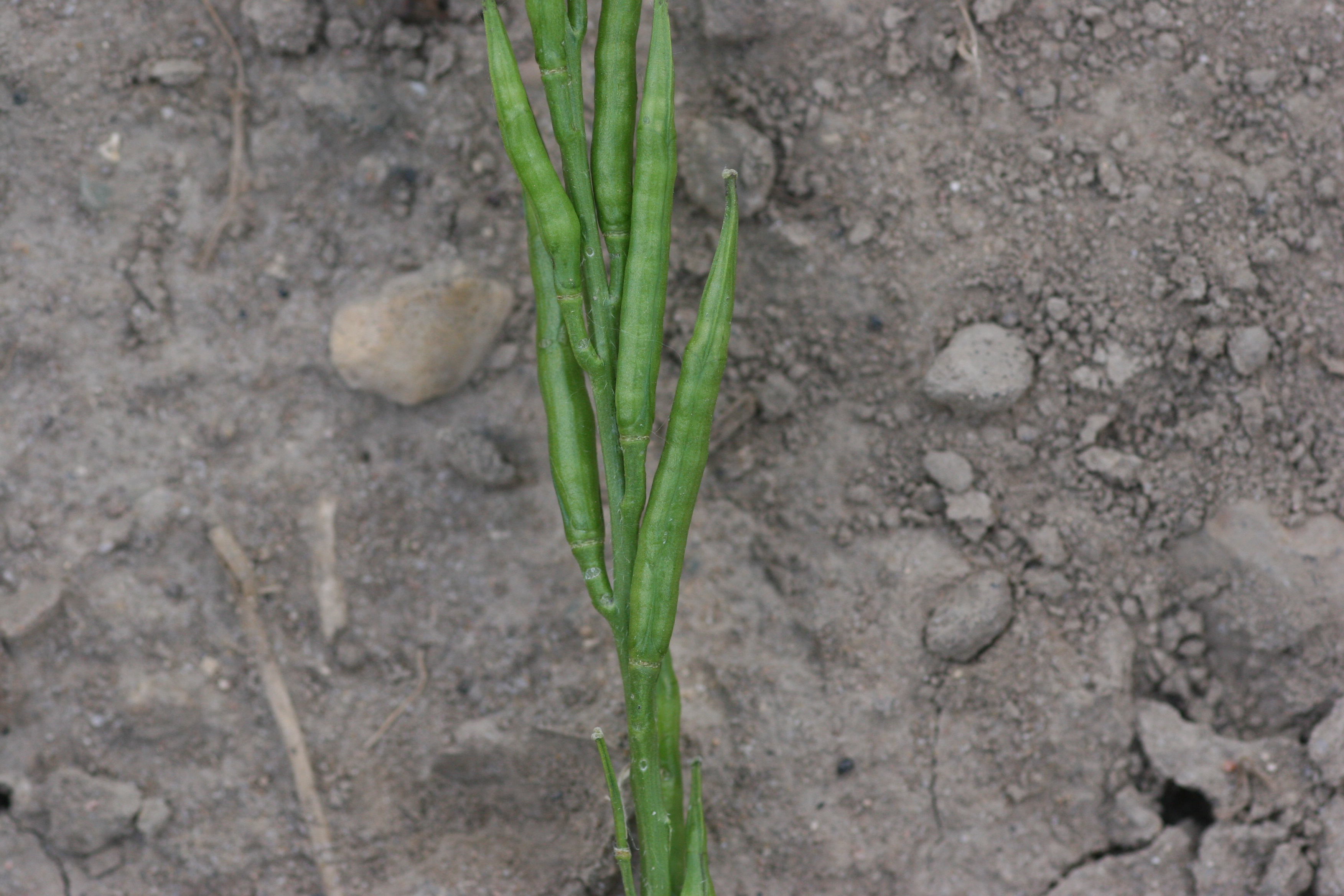
The fruits of wild mustard are slender and round pod. They are usually 2 inches long. Unlike the stems, they are usually hairless. Some of them can be short-hairy, though.
Pods can be either straight or slightly up-curved. The angles of them are out and up from the stem and bulges on which the ripening seeds are forming.
You can find 10-18 seeds that feature fine honey-comb patterns peer pod, which means there are approximately 2,000-3,500 per plant. The ripe ones are smooth with a diameter of 1 to 1.5 mm. They can be black, reddish-brown, greenish-brown, or perfectly brown.
Wild Mustard Benefits
Wild mustard is beneficial for your health. It is said that this plant can stimulate the appetite and is a good depression remedy.
This plant can help you alleviate pain and swelling. You just need to crush or ground the seeds and mix them with a little bit of water so that they can form a paste, which is called a mustard plaster.
Spread the mustard plaster on a cloth and then place it on the chest, sore joints, or any other areas that suffer from pain.
The mustard plaster will open up blood vessels and enables the system to remove toxins. It also increases blood flow, which eventually reduces swelling and pain.
In addition to alleviating swelling, field mustard can also help you reduce headaches.
If you happen to suffer from sinuses, try getting a bowl of hot water. Mix it with a little ground mustard. After that, inhale the vapor.
You can press the seeds of wild mustard to separate the oils from them. Once you obtain the oil, you can use it to make soap. Since it burns well, you can also use it for your lighting.
Wild Mustard in Culinary

Wild mustard is not only for medical purposes. It is one of the prominent and unique ingredients of several delectable dishes. This particular plant renowned for being a condiment that better the taste of many culinary creations.
The seeds are usually ground to produce the condiment that you have in your kitchen cabinet. They also the main ingredients for making canola oil. Did you know that Canola stands for Canadian Oil, Low Acid?
You do not have to invest in fancy cooking utensils if you want to spice up the dish with mustard. You only need to grind the seeds and mix them with vinegar and salt. That’s it!
Another way to use the seeds is by drying and grinding them into powder. Sprinkle it over your food to add a more peppery taste.
If you think that the seeds are the only one edible thing in field mustard, be ready to be surprised! Both the leaves and flowers can also be eaten.
Wild mustard flowers are usually tossed into salads. They can also be dried to replace the exorbitant saffron.
What about the leaves? They have some sort of piquant flavor due to being somewhat hot. Therefore, you can try flavoring your salads with them.
However, you have to be careful when picking up the leaves for culinary purposes. Make sure you only take the young ones. The older ones are usually bitter, and thus they are usually used as a potherb.
How to Prepare Wild Mustard for Dish
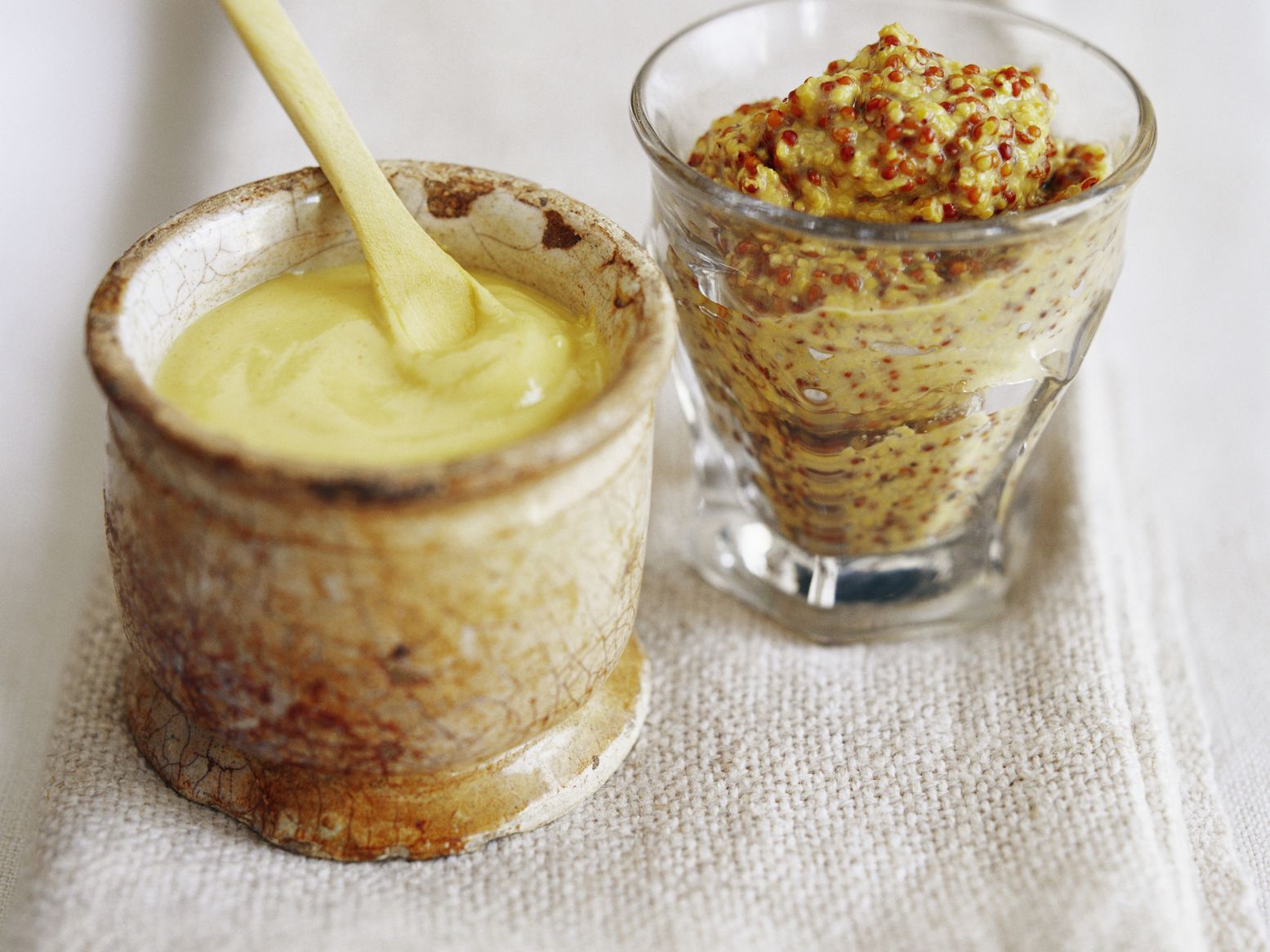
Since it thrives prolifically everywhere, it can be extremely dirty and buggy. You might find a lot of tiny black bus and caterpillars there. For this reason, you have to wash the flowers and leaves thoroughly before cooking them.
First, soak them in soapy water for about 30 minutes. After that, take them out and wash them off in a bowl filled with clean water to remove any remaining bugs and dirt.
After the cleaning process, now you can pick the stalks that will be incorporated into the dish that you are going to cook. Make sure they are thinner than a pencil because the bigger ones are usually hard to break, meaning they tend to too tough to eat.
Wild mustard is unique. It can be somewhat sharp when eaten raw. However, it will turn bitter when cooked.
The best way to get a perfect taste is by blanching or boiling it for a few minutes. By doing this, you will not only maintain the nutrition but also remove the bitterness. Once it is ready, you can use it the same way as you cook spinach in any recipe.
Although the leaves are edible, you had better not to eat them raw because the pesky hair will make you feel as if you were swallowing hairball, which eventually makes you feel like vomiting. Be sure to cook them first to eliminate this problem.
The flowers not only make a tasty salad. They can be used as homemade wild mustard spread too, which tastes the same as the condiment.
Tip: Try pair field mustard with caramelized onions, olive oil, and freshly squeezed lemon juice as it will taste much better.
Precautions
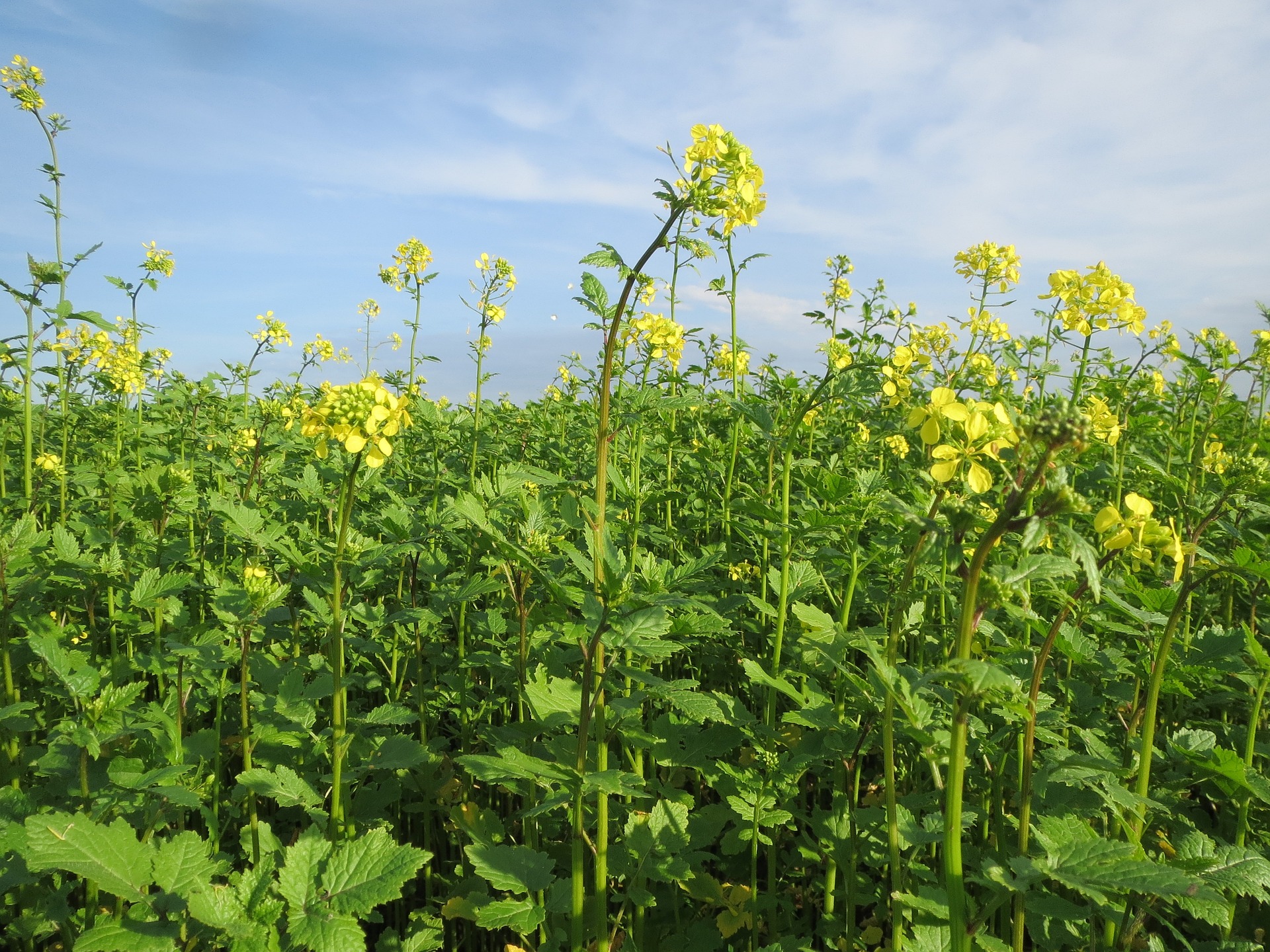
Wild mustard is edible and can be used for medicinal as well as other purposes, but it does not mean you can ignore the potential harm.
As stated above, field mustard can be used to alleviate sinuses by inhaling the vapor. It does not always work like a charm. In fact, for those who are quite sensitive to it, they can get eye irritation or skin rashes.
You have to be careful as the plants may be poisonous when the seedpods have already formed, not to mention most animals – except birds – can be very sick after consuming the seeds.
Due to the fact cattle can get stomach irritations after eating too much field mustard, many agricultural departments consider it as a poisonous plant. Besides making them very ill, it also affects the flavor of the milk, which makes it cannot be sold.
Although humans do not share the same system as cattle, they still need to be careful. If you consume the seeds in large quantities, you will be likely to have gastrointestinal problems.
Conclusion
You have learned many interesting facts about wild mustard. Surprisingly, most of its parts are edible. However, you still need to take the necessary precautions to avoid any bad effects.